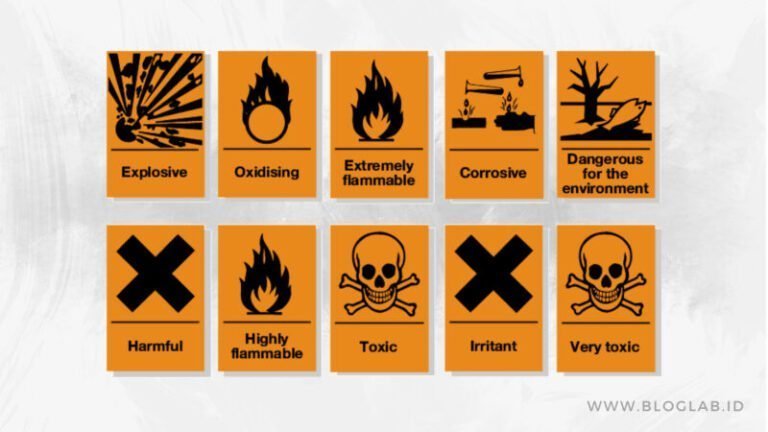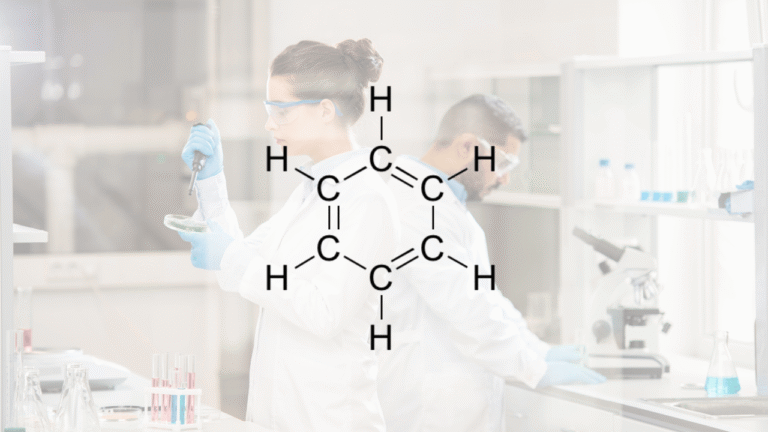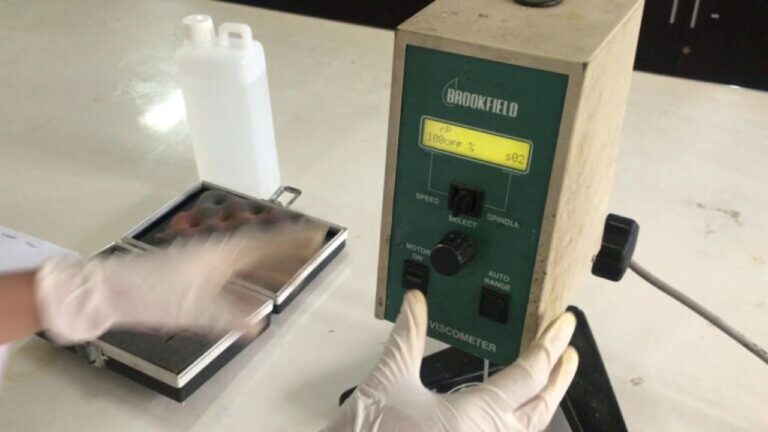17 Symbols List

In the world The lab, there are all kinds of symbols used to provide information or guidance for lab users. These symbols aim to increase the efficiency and security of the work in the lab, so it can minimize the risk of accidents or the damage. In this discussion, we're going to talk about some symbols that are often used in labs, with meaning or meaning. Through understanding of Lab Symbols And that, hopefully, can help lab users in doing their activities more safely and accurately.
Is that a lab symbol?
Lab symbols are either a sign or a symbol used to provide information or guidance for lab users. These symbols are usually in equipment, chemicals, or specific places in the lab. The goal of the use of this lab symbol is to increase the efficiency and security of work in the lab, so it can minimize the risk of accidents or the damage. Lab symbols are also useful to provide information about the right use of equipment or chemicals, as well as the proper safety procedures.
Lab symbols and meaning
Here's a list of dangerous symbols in the lab, and what they often use, which is this:
1. Iritation material symbols (Irritating)
The black cross-mark safety symbol has two codes, Xi and Xn. Chemicals with Xi code usually have a pungent and non-corrosive smell, but can cause inflammation if exposed to skin or mucus. If you work with chemicals with Xi code, make sure you don't hit the skin, inhale, or swallow. The example of a chemical with Xi code is chloroform and ammonia, which has a stinging scent signature.

2. Dangerous Symbols (Harmful)
The symbol of safe work is cross-marked black with Xn code indicates that these chemicals are dangerous. The materials with the Xn code risk health damage through inhalation, inception, or contact with the skin. If you work with chemicals with an Xn code, be sure to follow the safety measures necessary to avoid contact with that material.

3. Intoxication Symbols (Toxic)
The symbol for the survival of the works in the shape of a skull and bone indicates that the chemical contains toxic or toxic properties. Chemicals with these symbols can cause injury, cancer, even death if inhaled, ingested, or about skin. For example, mercury and cyanide. If you accidentally inhale or ingest a toxic chemical, immediately ask for medical attention. In situations like this, you can also attempt to neutralize the body by spewing out those chemicals and consuming milk, which is believed to help neutralize the body of a chemical contamination.

Four. Intoxication Symbols (Very Toxic)
Chemicals with a T + emblem have very toxic properties. These chemicals can enter the body through inhalation, inception, or contact with the skin. If it enters the body with a certain dose, it can cause chronic health damage until death. If you work with chemicals with this emblem, be sure to follow the safety measures necessary to avoid contact with that material.

5. Corrosive Symbols (Corrosive)
The working survival symbol with the drip image dripping into hand and iron indicates that Chemicals are corrosive.. It means that this chemical can cause wounds if exposed to unprotected hands and can cause rust to iron. Normally, these symbols are used for chemicals that have a strong acidic or base content. If you're working with a chemical with this symbol, make sure to use hand armor to avoid contact with that material, because it can damage living tissue if it's exposed to skin.

Six. Radioactive Symbols (Radioactive)
The symbol of survival works with the same image windmill indicates that the chemical is radioactive. It emits radiation that's very dangerous to humans and can cause a rapid or long-term toxic effect, such as changes in DNA, cells, or chromosomes over months or years. The example of a radioactive chemical plutonium And uranium. If you work with chemicals with this symbol, be sure to follow the safety measures necessary to avoid contact with that material.

Seven. Exploded Easy Symbols (Explosive)
The symbol of working safety with the explosion indicates that the chemical is easily detonated. To avoid the explosion, be sure to store these chemicals wet and keep them away from heat or source of fire. An example of an easy to explode chemical is potassium metal when mixed with water quite a lot. If you work with a chemical with this symbol, be sure to follow the safety measures necessary to avoid the explosion.

Eight. Burn Easy Symbols
The survival symbol of work with a burning image suggests that the chemical is flammable. The flammable chemical example used in the lab is kerosene, alcohol and sodium.
The chemicals with these symbols have the following characteristics:
- Burned due to contact with air at ambient temperature or room temperature;
- Flammable solids due to contact with a flame source;
- Flammable gases at normal temperature and pressure;
- Eject highly flammable gases in dangerous amounts, if mixed or contact with water or moist air;
- The solids or fluids that have a flash point below 0 ° C and the boiling point is lower or equal to 35 ° C;
- Firm or liquid that has a zero ° C - 21 ° C burst
If you work with these symbols, be sure to follow the safety measures necessary to avoid fires.

Nine. Oxidated Easy material Symbols
The survival symbol of work with the picture of a black fireball lit up indicates that the chemicals can cause other materials to burn by giving oxygen. This chemical is easily oxidized, which is a highly volatile and flammable substance through oksidasi. The example of a chemical with this symbol is hydrogen peroxide, potassium perchlorate,
Chemicals with these symbols are usually not flammable, but if direct contact with flammable materials or produce heat, it can be highly flammable. If you work with these symbols, be sure to follow the safety measures necessary to avoid fires.

10. Environmental Dangerous material Symbols
The symbol of survival of work with the images of trees and environmental media indicates that those chemicals could pose a danger to the environment. The example of chemicals that can damage the ozone layer is CFC (Chlorofluorocarbon), while the typical chemical example is PCBs (Polychlorated Biphenyls). Chemicals with these symbols can also cause death in fish and other water organisms. If you work with chemicals with this symbol, be sure to follow the safety measures necessary to avoid harm to the environment.

11.Flamable Solid)
Chemicals with job safety symbols that are fireballs burning above solid are highly flammable materials. The characteristic of this chemical is that it can react to its own instability to heat, so its prevention must be prevented by heat or reductor, contact with water, and materials that are flammable. Flamable Solid samples are magnesium, sulfur, and picric acid. If you work with these symbols, be sure to follow the safety measures necessary to avoid fires.

12.Liquid Flamable)
Simbol ini menandakan bahwa bahan kimia tersebut mudah terbakar. Beberapa contoh bahan kimia yang mudah terbakar dan berwujud cair adalah aseton, benzene, dan petrol.

13. Burning Gas Symbols (Flamable Gas)
This symbol indicates that the chemicals are flammable gases when exposed to sparks or heat. Some of the examples of chemicals that are included in this category are LPG, hydrogen, and acetylene.

14. Inflammable Gas Symbols (Non Flamable Gas)
This symbol indicates that the gas stored or the one in the process of transportation is not flammable. Some of the examples of gas that is included in this category are oxygen, helium and nitrogen.

15. Danger Symbols on Wet (Dangerous When Wet)
This symbol indicates that the material or chemical is quite sensitive to water. Therefore, in storage and its use, things must be certain dry. Some examples of chemicals that have these properties are potassium phosphide and calcium carbide.

16. Organic Peroxide Symbols (Organic Peroxide)
This symbol indicates that the chemical is an organic peroxide used in transportation and storage. The purpose of the use of this symbol is to minimize the risk of fires due to an easily oxidized chemical properties. Some of the organic peroxide samples that are included in this category are intercepted perdicarbonate, methyl ethyl kethyl peroxide.

17. Poisoned Symbols (Poison)
This symbol indicates that these chemicals are toxic in both the form of gas and nongas. This symbol is used in either storage or transport of these ingredients. Some of the examples of chemicals that are included in this category are calcium cyanide, carbon tetracloride, chlorine, and methhil bromide.

Now that's a list of 17 symbols you can find in the lab. Good luck.
Conclusion
The lab symbol has an important role in activity in the lab, because it can provide useful information and instructions for lab users. Through the right use of symbols, it is expected to increase the efficiency and security of the work in the lab, so it can minimize the risk of accidents or the damage. Therefore, it's important for lab users to understand the meaning or meaning of the symbols used, to be able to perform their activities in a more secure and precise way.
Source of article: www.unisalm co.id, www.ruangguru.com.





